To hear President Donald Trump tell it, sharks are mindless killing machines that should all be destroyed. A similar sentiment came completely out of character for marine biologist Matt Hooper (Richard Dreyfuss) in Jaws, presumably where 45 got it from: a “killing machine. All it does is swim and eat and make little sharks and that’s it.” But as terrifying as some of them are, swimming sometimes upstream with row and row of teeth that instantly replace each other when lost, tearing boats apart and surprise-attacking Samuel L. Jackson, they’re existence is actually a great deal more complicated than that.
Sharks play an incredibly significant role in balancing the ecosystem of our oceans. Being that 70 per cent of the planet is water, this seems vaguely important. There’s a reason killing them, making soup out of their fins, is outlawed. We need sharks. After Jaws became the first blockbuster film of all time, original author Peter Benchley became so dismayed by the uptick in shark-killing for sport that he rededicated his life to shark conservation. Later in life, he wrote White Shark, about a mutant Nazi experiment rather than a normal creature, and in which the main character gives several monologues about the importance of sharks.
Sharks are prevalent in every ocean, and while they can be a hazard, you’re more likely to die on land than in an attack. Still, it’s helpful to know what species are common where, starting with well-liked vacation spots such as Thailand. The following are the six most common types of sharks in Thailand that you may find yourself swimming with, or away from, when visiting the lovely beaches of the peninsula country.
1. Red-Tailed Black Sharks
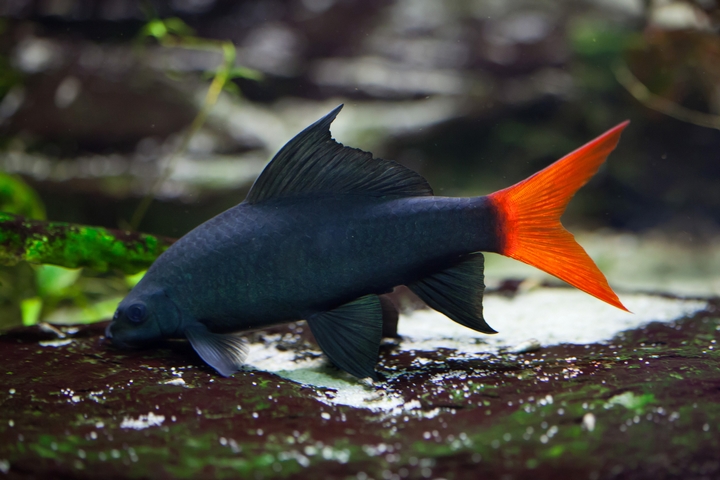
It’s unlikely you’ll spot these while scuba diving. Not only is the Red Tail critically endangered, but it’s one of the smallest species of shark. Most of them are bred in captivity, popular in Bangkok aquariums. While not closely related to normal sharks, often called the sharkminnow due to it rarely getting larger than 16 centimetres, it’s more associated with the carp family.
Thankfully, their popularity in aquariums are not responsible for their dwindling numbers. These sharks in Thailand have been decreasing in large quantities. More likely, they’ve been wiped out by dam-building and swamp-draining.
2. Zebra Sharks
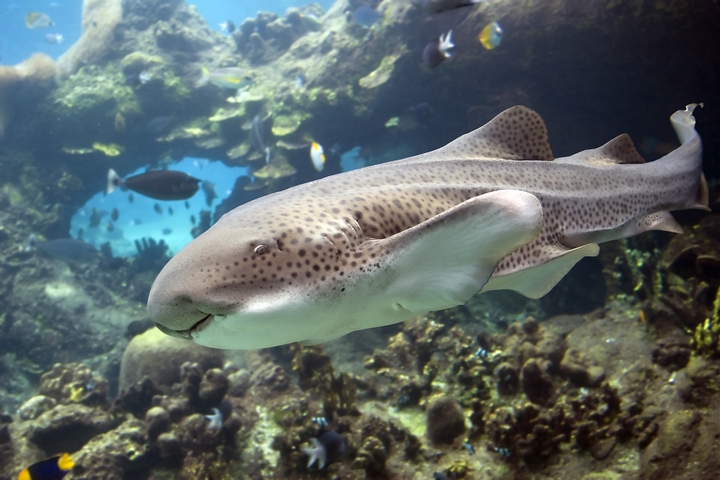
The Zebra Shark, who gets its name from its spotted colour, are a largely nocturnal breed of carpet shark, usually staying motionless on the ocean floor during the day. They are largely harmless, easily approachable, though they have been known to bite divers who attempt to ride them. But if you need a sign that reads, “Please do not ride the sharks”, you probably had it coming.
While not extinct, their numbers have been dwindling largely due the fact that they don’t typically live in deep waters, usually staying around 60 metres. They’re sadly commonly used for shark fin soup and liver oil.
3. Blacktip Reef Sharks
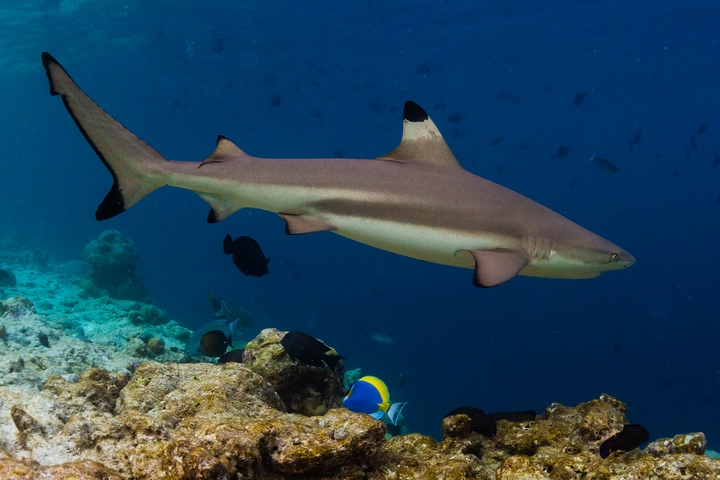
So far, we haven’t identified any sharks in Thailand that fit the classic physical description that comes to mind, but the blacktip is shark classic. Sleek, slender and gray, the blacktip are exactly what we see when the word is uttered. At around 1.5-2 metres long, they get their name from, naturally, the black tips on their dorsal and pectoral fins. Because of their tendency to stick to shallow waters, they are a species even snorklers may happen upon.
So far, despite their sleek, assasin-like appearance, they’re harmless to humans. They’ve become a particlular favourite of divers due to their tendency to swim curiously, without shyness, around humans without ever getting too close.
4. Whale Sharks
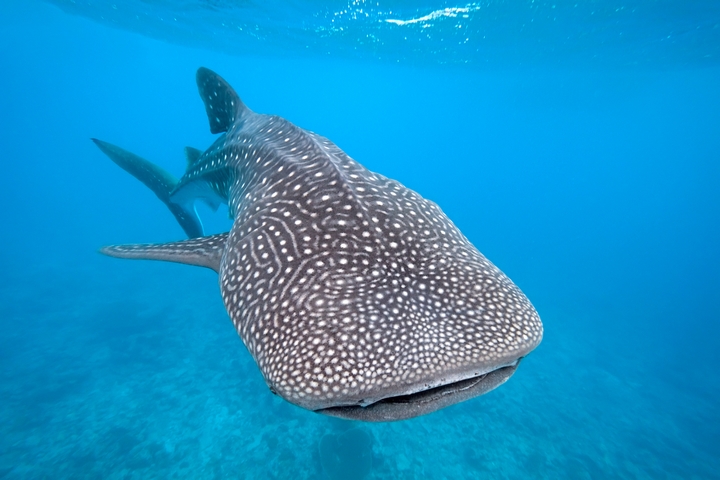
These are not only the biggest sharks in Thailand, but the largest in the world. Whale sharks are pretty hard to miss and thankfully not at all interested in humans. In fact, they’re even friendlier than black tips, happy to get as close as possible to us. They’re even harmless to other fish, merely feeding off the plankton they gather while moving.
Chances of encountering one in the waters of Thailand are pretty good, given their size and regularity in the area. Just the pictures you’ve surely seen online are breathtaking and really make one ponder the miracles of the sea. Imagine one up close.
5. White Tipped Sharks
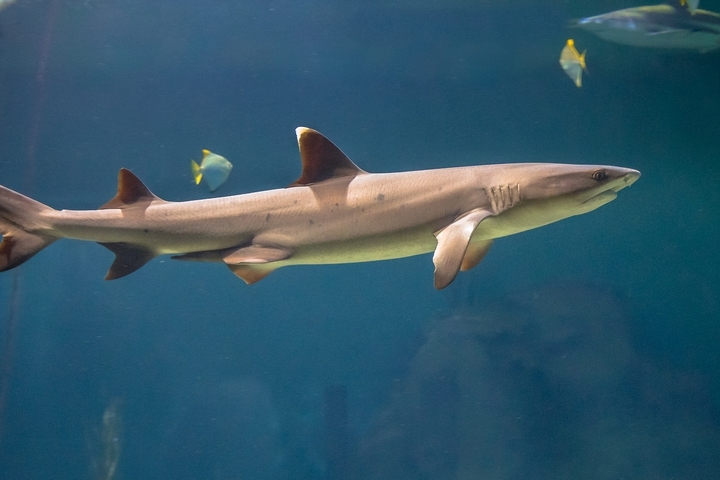
Like their cousings the black tips, but just the opposite colour, or lackthereof on the dorsal and pectoral fins. They grow about the same size and are just as unshy and harmless to humans, often swimming in packs and circling divers just out of sheer curiosity.
6. Bull Sharks
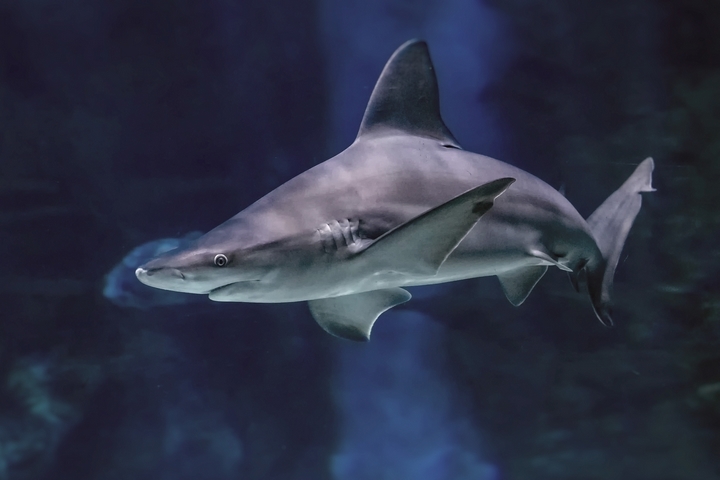
And now we must unfortunately end with a word of warning. When the incident that inspired Jaws – the Jersey Shore attacks of 1917 – occured, there was and is still some debate about what species of shark was responsible. While the popular call has always been the Great White, it’s more likely that it was a bull shark, given their propensity for aggression and swimming upriver.
Since 1958, however, less than 50 attacks have taken place by the species. This is largely because the species, in Thailand in particular, is becoming something of a rarity. They have mostly been spotted along the Gulf of Thailand. While they are the only dangerous species listed here, the fact that encountering one is so uncommon is reassuring.
Rather, shark species in Thailand appear to be as peaceful as the culture there. As Spalding Gray pointed out, the people of Thailand know how to have a good time getting born, growing up, getting married, staying married – they even know how to have a good time on New Year’s Eve.




